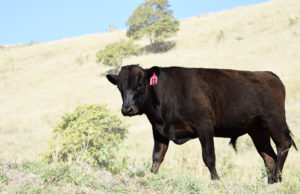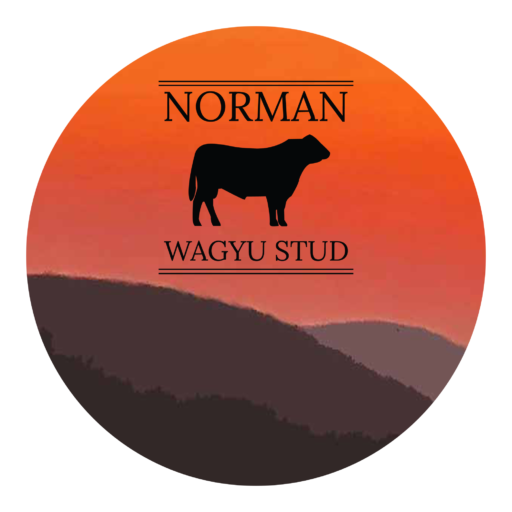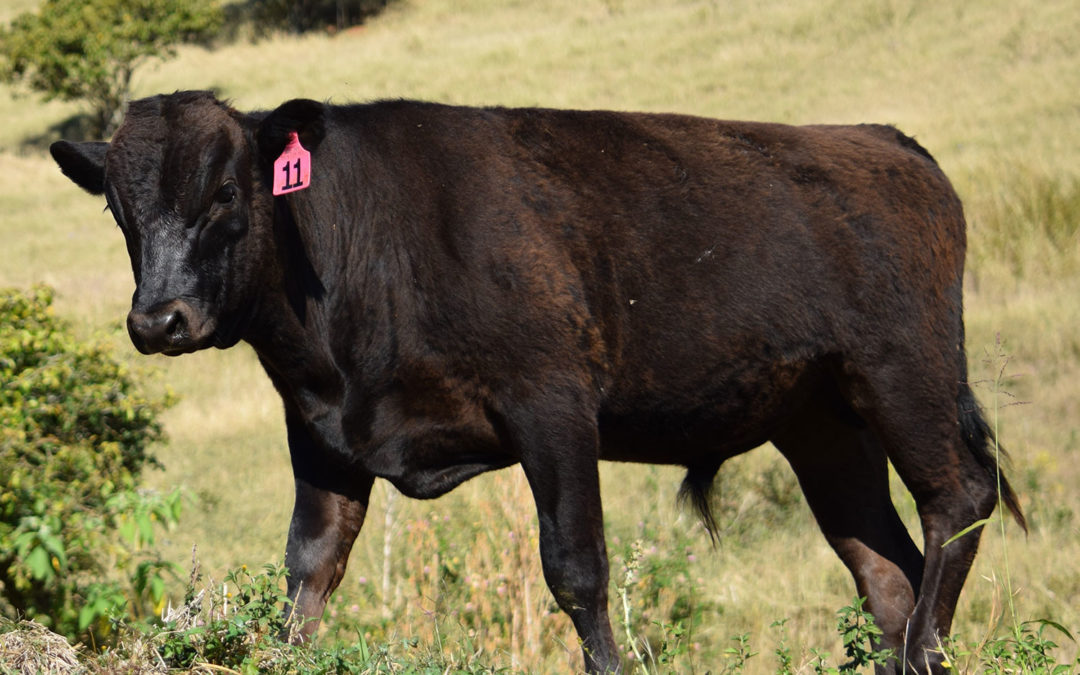
HOW MUCH BULL?
In this article we explore the cost of the bull unit and how to rationalise the amount of money that should be spent on bull purchases each year. When addressing these topics there is a need to consider several aspects of the bull unit:-
- How do you analyse bull costs?
- What percentage of bulls should be used?
- How long should a bull be kept in the breeding herd?
- How do you evaluate genetic improvement?
Analysing bull costs
In most economic assessments of the bull component of the herd, accountants approach the subject in the traditional manner. Bulls are treated as new purchases and their value gets absorbed into the average book value of the stock on the property. When they are culled, they are classified as normal sales and the cost of running the bull is not clearly identifiable. Irrespective of whether that bull has cost $10,000 to purchase or only $1,500, the value of that animal to the herd is not easy to grasp.
An alternative approach is to regard bulls as a variable cost, the same category as supplementary feeds, drugs costs and veterinary treatments. By doing this, it is easy to evaluate the worth of the male component of the breeding herd and even to compare it very accurately with techniques such as artificial insemination. The goal is to look at the bull-cost per breeding cow of providing her with the opportunity of getting pregnant.
This is simply done by examining the cost per cow of having a bull running with her over his lifetime in the herd. It is governed by :
- The initial price of the bull minus the price received for that animal when sold divided by the number of cows he is expected to cover during his working career.
Suppose you pay on average $5,000 for your herd bulls, and at the end of their working life they are sold for $1400 at the abattoirs, they are joined at the rate of 1 bull/25 cows (1/25 x 100 = 4%) and they remain in the herd for 3 years. Then the cost per cow is as follows:-
($5,000 – $1400 ) x 0.04 (%) /3 = $45.33/cow/year.
Not every cow will become pregnant and raise a calf, so it is best to examine the cost of the bull in relation to each calf produced – since calves produced, and the resultant kilograms of beef produced is the financial driver of enterprise profitability. So there is a need to go one step further and divide the figure produced above by the average weaning percentage – for example 85%.
Cost/calf/year = $45.33 x 1/0.85 = $53.33/calf/year.
By working through these calculations, it is possible to see where improvements can be made as well as comparing the costs with other procedures in the beef herd such as supplementation, or running an artificial insemination program with frozen semen. If for example, you are able to decrease the bull percentage required from 4% to 2% (ie 1 bull per 50 cows) an effective bull testing program, then the bull costs per cow will halve ie $26.67/cow/year using the 0.85 weaning percentage.
Similarly, you can compare it to the costs of running an artificial breeding program where you can compare the cost of purchasing a bull to the cost of heat synchronising drugs, the semen and the cost of the A.I. technician. It is also possible, utilising the power of Estimated Breeding Values (EBV’s) to factor in
- the potential extra income that may be generated by improving, for example, 200 Day, or 400 Day weights;
- the potential extra income that may be derived for increasing the carcass-quality (eg marbling) associated with investing more money into a genetically superior bull or semen.
Using this technique of examining bull costs, a range of factors need to be considered eg
- how many bulls and
- how long should they be kept?
What is the ideal bull percentage?
When it comes to the vital question of bull percentage (ie how many) then the answer again is a little vague. It depends on the size of the paddock, the number of watering points, the physical attributes of the paddock and the length of the joining period. If Breeding Soundness and libido testing have been performed and the paddocks are reasonably small and the stock are in good condition, it is not unreasonable to utilise bull percentages around 1.5%. In very large, rough paddocks with many watering points and low stocking rates, the bull percentage may have to be around 5% to maximise conception rates.
How long should bulls be kept?
There is no absolute answer. One consideration is that if heifers are allowed to return to the breeding herd, then bulls can only be kept for 2 seasons if the size of the breeding herd is less than 200 head as the level of inbreeding will become unacceptable. Other considerations which should be taken into account include:-
- If the aim is to make steady genetic improvement, then continually turning over the bulls is still the best way to achieve this goal as it lowers the generation interval for the herd.
- The proportion of bulls with abnormalities, such as reduced libido and venereal diseases (if present) increases as the bulls get older. ie in general, older bulls don’t work anywhere near as well as younger bulls and again, a regular check of the bull breeding unit will identify many of these passengers.
Speaking of passengers and the economic advantages of lowering bull percentages, one of the less recognised advantages of using the minimum required number of bulls is the benefit of being able to run more breeders. Suppose a property can cut its bull percentage from 7% to 2% in a 2,000 cow herd, this then allows an additional 100 breeders to be run on the property.
A general guide would be “that unless a bull is of exceptional genetic potential”, 4 years should be seen as the maximum length of time he should stay in the herd.
Finally, it should be also recognised that the younger a bull can feasibly be added to the breeding herd the better. He needs to be grown enough to handle the work-load and the environment, but when it comes to maximising genetic gain, its what’s in the “genes” that counts and not how big he is able to grow if he is allowed to mature in his own right.
A young bull that starts work early may never reach the size of his mate that commences duties at 1,000 Kgs and so he will not realise the same price at meatworks BUT it is the progeny that should be compared.
Evaluating genetic improvement
There is a lot of information that is available in the bull catalogue when buying a new bull so you need to be able to interpret it in terms of “what will it return to my property”.
The EBV is a very good start when comparing bulls at a sale. There are very complex formulae for deriving the economic value of genetic gain, but unless you have a degree in maths, it is of little use to you if you only have 5 minutes in which to perform your calculations. The simple “back of the envelope” technique which provides a rough guide is as follows:
Suppose the long-term goal of the property is to improve weaning weights, and the EBV’s for 200 day growth rates are provided in the sale catalogue. There are 2 bulls to compare-
- one with an EBV of +40Kgs and
- the other has an EBV of +10 kgs for 200 day growth rates.
Now if vealers are worth $3.00/Kg at sale and the bulls are mated at 2% and kept for 2 years this means a bull will on average produce about 50 cows available to be bred/year and 85% weaning rate) = 85 calves in his lifetime in the herd. On first bull (EBV +40) will produce progeny 15 Kgs heavier than the second bull (EBV+10), remembering that only a half of the calf genetics is from the bull (hence divided by 2)
(40–10)/2=15 Kgs.
Therefore the first bull will produce an additional 1,275kgs @ $3.00/kg of veal over and above the second bull. Therefore, you can afford to pay up to $3,825 more for the first bull. The above calculation relates to bulls of equal “mating potential”. You can go one step further and use the serving capacity and scrotal circumference data (if provided) toderive the mating potential of each bull listed. A bullthat has passed a veterinary bull breeding soundness evaluation (VBBSE) and has high libido and scrotal circumference >36cmsmayproduceup to one and a half times as many calves as a bull with a lower libido and/or scrotal circumference<36cms.).
In the above example, if the first bull (EBV +40) has a poor VBBSE result compared to the second bull (EBV +10), then the influence of the first bull is not going to be as great and the price paid for him should be adjusted accordingly ie
the price differential between the two bulls could in reality be about $1,000 and not $3,825 if the fertility data is available and utilised. This example is only a rough guide, as some of the genetic improvement (as would occur with the better bull) stays in the herd with the heifers kept for breeding, but if the above calculation is used, it will provide an indication of how to handle the price differentials between bulls at a sale.
If you are selecting for a number of traits then the calculation becomes a little more complicated eg marbling, milk , calving ease etc. The general rule is the more traits you attempt to include in your decision making process, the less improvement you will be able to make in any one direction, unless of course the traits are highly correlated.
Using the same formula above, you can calculate the final value of veal if the bull you select has the capability of improving the price/kg you receive for your product. An example is the premium that can be obtained by increasing marbling. In this case, the final kilograms produced my not increase(or may even slightly decrease, depending on the genetics), but the price/kg may increase substantially.
For example, if you currently have an Angus herd where vealers are generating $3/kg, you may wish to consider breeding Wagyu x Angus F1’s with the potential to generate $5/kg. In this case, are 2 years it may be feasible to pay 10’s of thousands of dollars more for a bull that may markedly increase the bottom line.
Summary
Keep your bull percentages as low as possible, use young bulls, don’t keep bulls in the herd too long and develop a method to evaluate your purchase so you can maximise to your enterprise-otherwise, you could be wasting money on a whole lot of bull.




